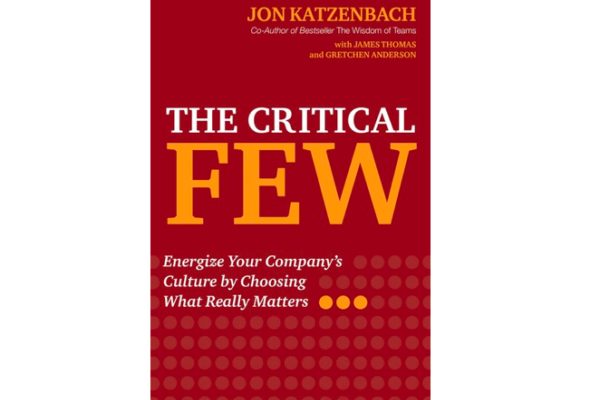
This piece is adapted from a letter to a Fortune 500 CEO, building on a dialogue we had about evolving the culture of a company in its second century. The path described here isn’t meant to be a universal recommendation – we’d do very different things in different contexts. Rather, I share this as a corrective to what I view as a trap that many executives fall into in the name of culture change: trying to make this change into a program that proceeds in a linear way. Culture doesn’t change along a path from “diagnose” to “vision” to “design” to “implement.” Logical as that sequence might seem, I don’t think I’ve ever seen a culture change program proceed in that fashion and actually achieve the result envisioned.
Culture is the fabric of shared patterns of how people act, think and feel that impact collective performance. It’s the grain of how a company’s people perceive their world, pay attention to some things and not others, engage customers, spend money, treat one another.
Strategy must shape culture. If strategy is “an integrated set of actions designed to create a sustainable advantage over competitors,” its fulfillment requires actors with the right shared ideas, values and habits.
Strategy is also shaped by culture. Strategists carry out their work from within organizations that think and act in certain ways. Culture is usually deeper than strategy, more pervasive, longer lasting.
We are at the start of a new era. As we work on strategy, we are trying to shape the concepts, objectives, plans, frameworks for decision-making, and so on, that will establish the company’s best destination. In parallel, we should ask what we aspire (and need!) for the company to be like—what culture will help us reach this destination.
Let’s begin with a statement of strategy – perhaps just a sentence, perhaps a few pages that tell the story of the company we aspire to be. From here emerge a handful of words that encapsulate the essence of whom we need to be, and how we need to operate. Words that are differentiating, that express not just the basics of business (“performance”; “customer focus”) but what makes us unique.
Then imagine us as a company that exemplifies these words.
A handful of words: what will it take to live them? If we could be this way, consistently – what achievement would be possible? What would we invent, what experiences would we deliver, what encumbrances would we cast away?
In changing a culture deliberately, we must seek actions that stick, that spread, that signify. There’s art to doing this. We can go a long way by focusing on five basic principles:
- Find exemplars, and help them help us
- Bake the “how” into the “what”
- Create fast feedback loops
- Make our own processes and policies showcases, worth talking about
- Relentlessly explain why
To begin with, let’s find eight people who exemplify the culture that we want to create and who have the boldness and the vision to lead change. Let’s bring them together as a working team. Let’s give them the space and the support they need to call out the differences between how we are and how we want to be. Let’s lean in to make twenty visible changes in twenty weeks. Let’s explain the reasons for those changes (relentlessly explain why!). No big communication on culture. Don’t even begin with a public statement of our handful of words. Communicate things we’re doing, and communicate why we’re doing those things. Concrete first, abstract later.
Let’s pick three big “whats” – priorities that already matter to the business. Bring the people central to each of those priorities together. Engage them in a dialogue about what it would look like to truly, dramatically live the handful of words. Push them to dream. Involve some of the exemplars. Invite voices from the outside. Whatever will help to stretch beyond the rhythm of business as usual. Then reach agreement on three things: what do they do next; how do they keep the dialogue alive to challenge themselves in stretching to a new standard; what opportunities do they have to engage others about what they are doing differently and why.
The exemplars and the folks focused on the three big “whats” will see lots of issues, lots of obstacles that go beyond what they think they can impact. Those represent what they believe other people need to change. There should be a response to each item on this list – from as high up as necessary, from the CEO if that’s what’s needed.
As things get done and things get changed, keep explaining why.
We have lots of processes, and of course most of them aren’t “showcases worth talking about.” There’s no need to change them all at once. Start somewhere—and relentlessly explain why as you go along. These first changes become proof points.
There will be a time and a place for a longer-term program of action, something that could be laid out like a roadmap. Don’t start there—start with a set of actions and forums for dialogue, which, like these, are set up to yield more than the sum of their parts.
Don’t sweat too much whether the conceptual articulation of cultural aspirations – such as our handful of words – is quite right. It won’t be. As we engage a range of people, as we act and give the reasons for our actions, we’ll refine our concepts. Better that we solve for the challenges of articulating the culture we want and need as we’re solving for the larger challenge of how people will come to act, think and feel in new ways.
Don’t spend a lot of time in diagnosis. The manifestations of our current culture are everywhere. We can diagnose the roadblocks we encounter along the way; there will be plenty to diagnose.
Don’t treat culture as something that will be rolled out. Start doing new things, thinking and talking in new ways, reflecting on what it would look like to live the aspirations. Get more people doing that with time. Of course it will be important in a range of ways to reflect cultural aspirations in structures, processes, policies, programs, and so on. But don’t put those first.
What’s first is simply the question of who we’ll be and how we’ll be. How can we reach closer to our ideals?
At first, this is a question for a few of us—and eventually, for all of us. We shine a spotlight to a few places that matter at first, then cast the light more broadly over time. We reach toward the moment when our people feel these ideals deep in their sinew, see the world through these commitments, weave this way of being through the countless things they do even without thinking, each day and in the years that follow.



